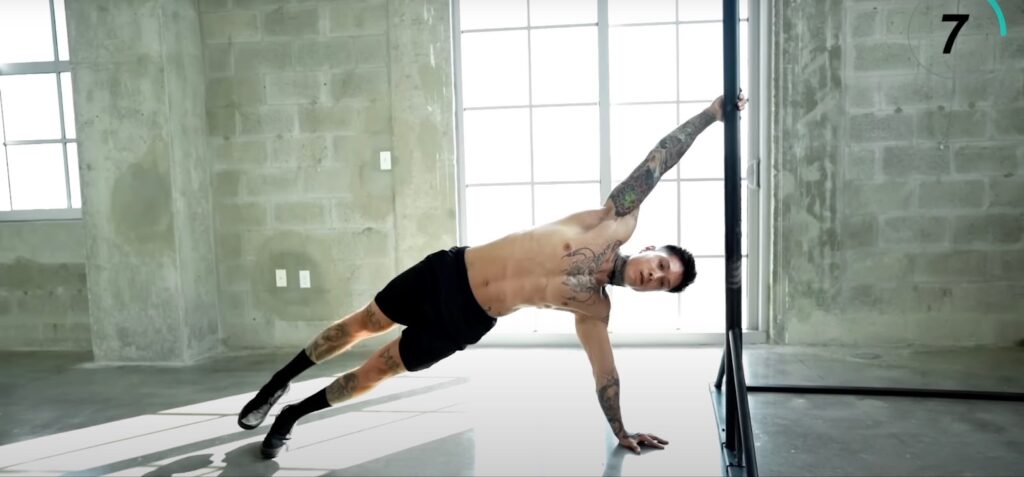The flag exercise, a visually striking and physically challenging feat, captivates fitness enthusiasts worldwide. It’s not merely an exercise; it’s a testament to one’s fitness journey, combining strength, balance, and endurance. This comprehensive guide delves into the intricate process of burning fat and building the necessary strength to master the flag exercise. We explore the synergy of diet, workout routines, and technique refinement crucial for this endeavor.
Understanding the Dynamics of the Flag Exercise
Central to mastering the flag exercise is understanding its mechanics. It involves suspending your body horizontally in the air, supported only by your arms. This remarkable display of strength isn’t just about muscular power; it’s equally about body composition and balance. To perform the flag, one needs a harmonious combination of core strength, arm power, and a lean physique.
Demystifying Fat Loss: A Prerequisite for the Flag
Embarking on the flag exercise journey begins with addressing body fat. High body fat can hinder your progress, making the exercise more challenging due to the additional weight. Fat reduction is thus a primary focus. Achieving a leaner physique not only makes the flag exercise more feasible but also enhances muscle definition and performance.
Strategic Nutrition: Fueling for Fat Loss and Muscle Gain
Nutrition is a critical factor in reshaping your body. The ideal diet for the flag exercise balances:
- High-quality proteins: Essential for muscle repair and growth;
- Complex carbohydrates: Provide sustained energy for workouts;
- Healthy fats: Crucial for hormonal balance and joint health.
Ideal Nutrition Breakdown for Flag Exercise:
| Nutrient | Percentage of Diet | Examples |
|---|---|---|
| Protein | 40% | Chicken, fish, legumes |
| Carbs | 40% | Whole grains, vegetables |
| Fats | 20% | Avocado, nuts, olive oil |
The Role of Macronutrients in Flag Exercise Preparation
Macronutrients play distinct roles in preparing for the flag exercise:
- Proteins: Aid in muscle repair and growth, crucial after intense workouts;
- Carbohydrates: Provide the necessary energy for training sessions;
- Fats: Support overall health, including hormone production and joint lubrication.

Effective Workouts: From Fat Loss to Flag Mastery
To achieve the flag exercise, a tailored workout plan is essential. This plan should include:
- Cardiovascular exercises: For efficient fat burning;
- Strength training: Focusing on muscles used in the flag exercise;
- Flexibility routines: To enhance muscle elasticity and reduce injury risk.
List of Key Exercises for Flag Preparation:
- Pull-ups;
- Planks;
- Side planks;
- Leg raises;
- Push-ups.
Core Strengthening: The Foundation of the Flag Exercise
A formidable core is the linchpin in executing the flag exercise with precision and safety. This segment of your body acts as a central link, connecting upper and lower limbs, and plays a pivotal role in almost every movement, especially in an exercise as demanding as the flag. Strengthening the core muscles — which include the abdominals, obliques, lower back, and hips — is not just about achieving a toned appearance; it’s about building a powerhouse of strength that anchors your entire body.
To fortify the core, a variety of exercises can be employed:
- Planks and Side Planks: These static exercises are deceptively simple yet intensely effective in building endurance and strength in the core muscles;
- Russian Twists: By rotating the torso while holding a weight, this exercise engages the obliques and the entire core;
- Hanging Leg Raises: These not only challenge the core but also enhance grip strength, which is beneficial for the flag exercise;
- Ab Rollouts: Using an ab wheel to roll forward from a kneeling position intensely works the entire core region.
Technique and Form: Mastering the Flag Exercise
Beyond brute strength, the flag exercise requires a nuanced understanding of technique and form. Proper technique ensures efficiency in movement and reduces the risk of injury. Key components include:
- Grip: A firm and correct grip on the pole or bar is crucial. This involves using an overhand grip with one hand and an underhand grip with the other, spaced wider than shoulder-width apart;
- Body Alignment: Maintaining a straight line from head to toes is essential. This requires engaging the core, glutes, and legs throughout the exercise;
- Progression: Start with simpler exercises, such as vertical holds and tuck flags, before progressing to the full flag. This helps in gradually building the strength and technique needed;
- Breathing: Controlled breathing helps maintain focus and muscle engagement. Exhale while lifting into the flag position and inhale while lowering.
Conclusion
The journey to mastering the flag exercise is as rewarding as it is challenging. It demands a balanced approach, incorporating targeted training, strategic nutrition, and technique refinement. With dedication and the right guidance, achieving this feat is within reach.